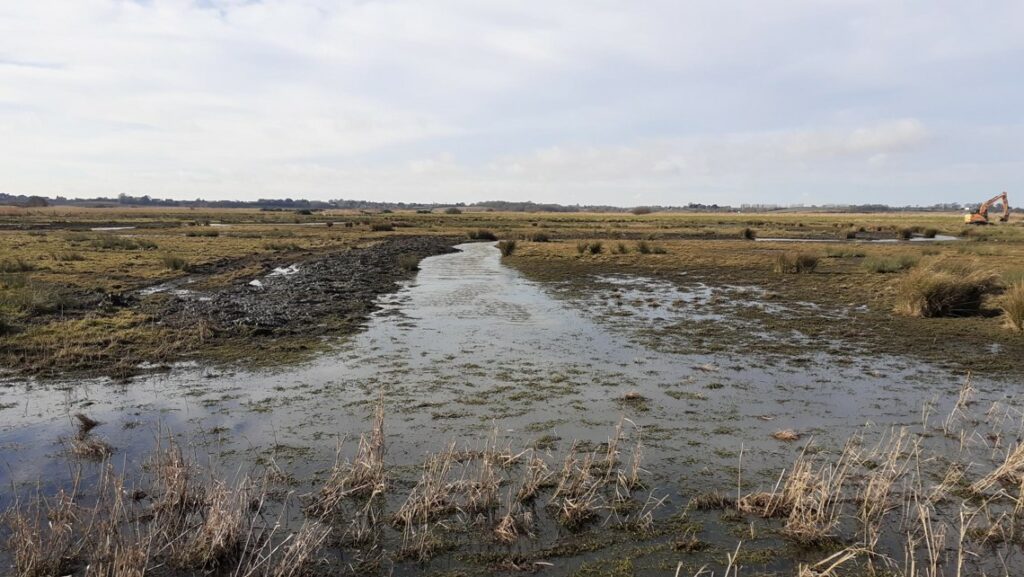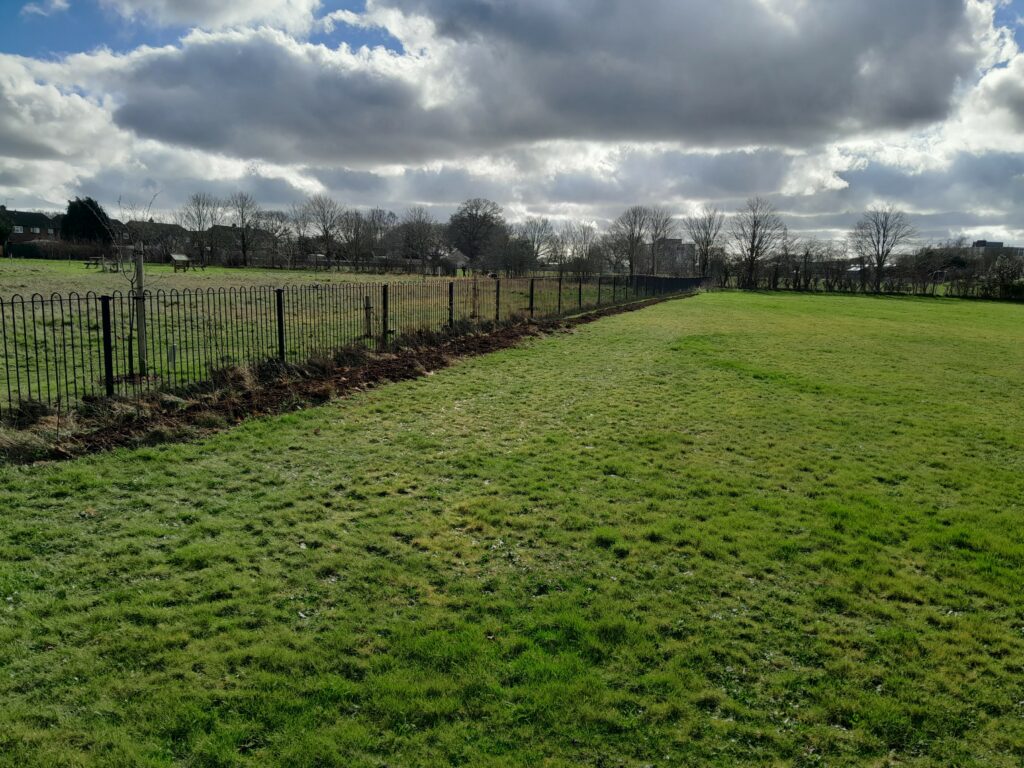Nature recovery is a key part of our ongoing work to conserve and enhance the Suffolk & Essex Coast & Heaths National Landscape. Our Nature Network Officer, Alex Moore da Luz, provides a round-up from all of our nature recovery projects and volunteer work parties for February 2024.


Suffolk Wildlife Trust – Trimley Marshes
The project funded by the Farming in Protected Landscapes programme has seen in-dyke anti-predator fencing installed. This is in our Nature Recovery Core Zone G: Stour & Orwell Estuaries and Surrounding Areas at Trimley Marshes.
The new fencing will help protect nesting birds such as lapwing and ringed plover from fox and badger predation. The work is part of a series of habitat creation and predator protection measures on the reserve that can help enhance this extremely important nature reserve that is surrounded by human development.
The work includes:
- 2 x outlet restorations
- 1.9km of foot drain creation and restoration
- 2 x breeding wader island creation
- Island reprofiling
- 1 x scrape restoration
- 1.2km of anti-predator in-dyke fencing

Bawdsey
In partnership with Bawdsey Parish Council the National Landscape is helping to bridge the gap between two Nature Recovery Core Zones by creating new corridors for wildlife in the form of hedges and trees.
Volunteers helped to plant a hedge for a day in February contributing to the creation of nearly 900m of new wildlife habitat.

Leiston
In partnership with Leiston Town Council, Greg from the National Landscape team and volunteers helped to plant a new hedge and gap up an existing one which will help to create 330m of hedgerow habitat.
This will help a number of suburban species such as hedgehog, slow worm, house sparrow and dunnock.

Suffolk Wildlife Trust – Stanny Marshes
£5,000 worth of Farming in Protected Landscapes funding has been secured to pay for habitat enhancements at the Suffolk Wildlife Trusts newly acquired nature reserve near Iken.
The money will pay for 900m of new foot drains which are fantastic feeding habitats for waders and wildfowl. This is a welcome boost for the Suffolk & Essex Coast & Heaths National Landscape’s flagship species, the redshank (above), and many more species.
Suffolk Wildlife Trust – Snape Marshes
An additional £5,000 of Water Environment Improvement Fund money has been allocated to another Suffolk Wildlife Trust nature reserve just upstream from Stanny Marshes.
This funding will pay for further foot drain creation and restoration work which will help to enhance yet another Suffolk Wader Strategy site in Suffolk. Foot drains are long, linear scrapes (typically up to 3m wide and 50cm deep) and are designed to hold surface water, acting as very important wet features.
The beneficial effects from the creation of foot drains is further amplified when water overtops them in spring. This ‘foot drain flooding’ creates areas of shallow splashing which are an important additional habitat feature for waders.
Fields with high foot drain flood densities attract significantly higher densities of nesting lapwing; which nest near such features. Later in the season, chick field use increases significantly with foot drain density and chicks are much more likely to forage nearer foot drain floods in areas of wet mud created by receding water levels.
In late season, lapwing chick body condition will be significantly higher in fields with foot drain densities of more than 150m / ha (source RSPB).

Upcoming Nature Recovery Work Parties
- Wednesday 6th March – Shotley Gate – Wader Fencing Erection
- Friday 8th March – Bawdsey – Hedge Planting
- Thursday 14th March – Shotley Gate – Wader Fencing Erection
- Friday 15th March – Higham, Giffords Hall – Giant Hogweed Control
- Friday 22nd March – Task tbc

